Where to dig in?
Looking for the best gardens in the world? You’ll discover world-class botanical destinations that range from Arizona’s Boyce Thompson Arboretum with its 97.7% global ranking to Norway’s Arctic-Alpine Botanic Garden, the world’s northernmost botanical collection. Visit Wales’ Plas Cadnant Hidden Gardens for exceptional displays, or explore Missouri and Chicago’s renowned botanical centers for extensive plant collections. Don’t miss Morocco’s vibrant Jardin Majorelle showcasing 300+ species, or the Caribbean’s lush Jardin Botanique de Deshaies blending tropical flora with exotic wildlife. These premier destinations offer detailed insights into botanical excellence across diverse climates.
Top-Rated Botanical Gardens by Global Rankings and Visitor Reviews
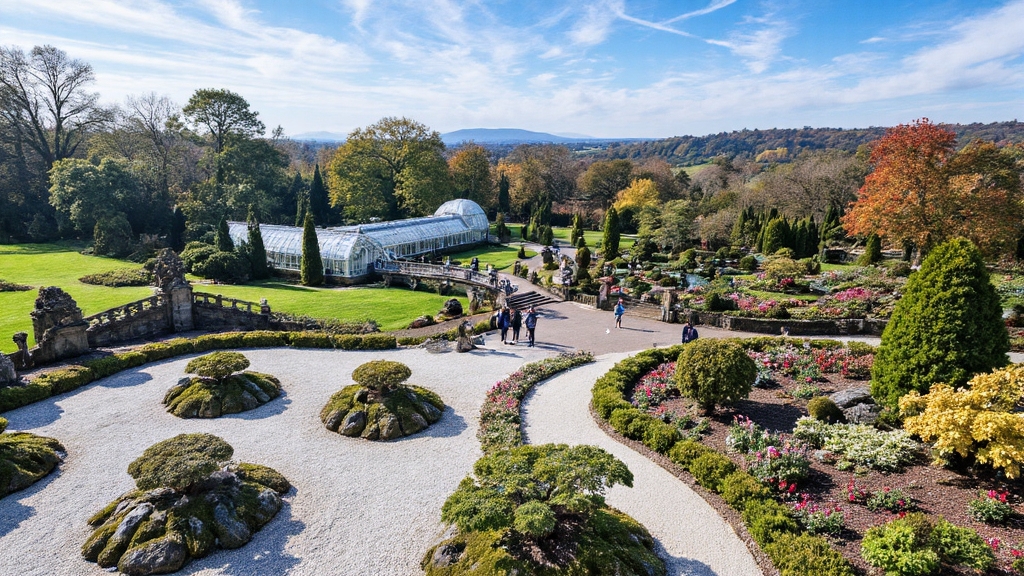
When planning your next botanical adventure, you’ll discover that global rankings and visitor reviews reveal some truly exceptional gardens worth visiting in 2024.
Leading the Global Rankings
Arizona’s Boyce Thompson Arboretum tops global botanical rankings at 97.7%, followed closely by Wales’ Plas Cadnant Hidden Gardens at 97.5%.
Arizona’s Boyce Thompson Arboretum claims the top spot with an impressive 97.7% rating, showcasing desert plants and diverse cacti collections. Wales’ Plas Cadnant Hidden Gardens follows closely at 97.5%, featuring historic revival gardens and peaceful landscapes. The soil types in these gardens range from loamy soil to peat, supporting various plant species.
Consistently High-Rated Destinations
You’ll find Missouri Botanical Garden and Chicago Botanic Garden among the top-rated options, both recognized for extensive plant collections and educational displays. Florida’s Fairchild Tropical Botanic Garden attracts visitors with lush tropical palms and flowering species.
Geographic Diversity
The United States leads with nine gardens in the top 20 global rankings, while Australia contributes three highly-rated locations, demonstrating strong botanical tourism across diverse climates and horticultural styles. Many of these premier destinations have earned UNESCO World Heritage status, including Singapore Botanic Gardens and Royal Botanic Gardens, Kew, recognizing their outstanding universal value to humanity.
Desert Oases: Exploring Arid Climate Gardens and Cacti Collections
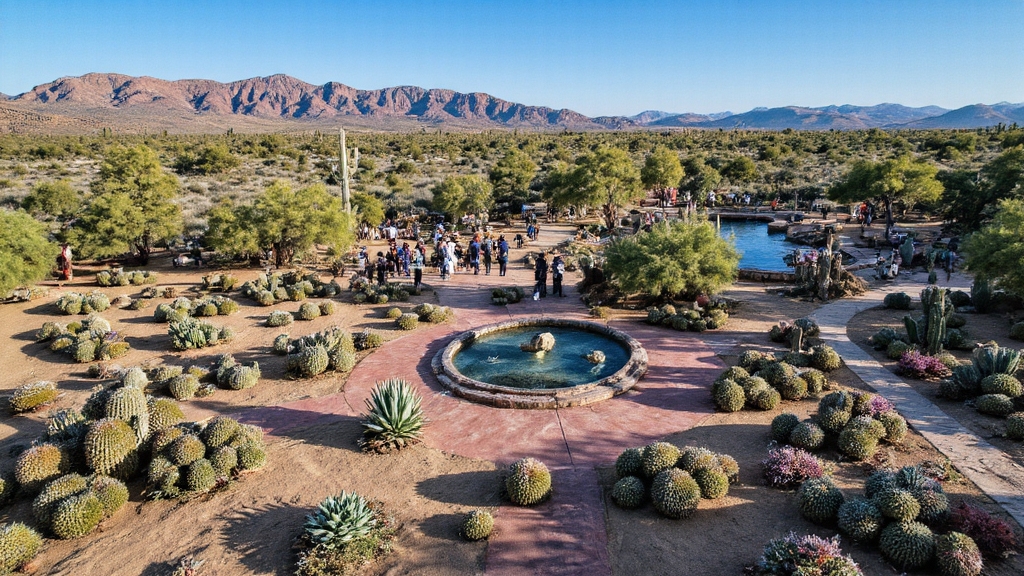
Several of the world’s most remarkable botanical gardens thrive in desert environments, where cacti collections and drought-resistant plants create stunning displays against harsh, arid backdrops. You’ll discover over 300 plant species at Jardin Majorelle in Morocco, where vibrant blue architecture complements desert flora. The garden showcases cacti diversity and xerophytes that’ve adapted to minimal rainfall through thick leaves and specialized water storage. The kink-resistant design of hoses like those from Flexzilla ensures efficient water management in any garden setting.
Desert oases like Wadi Bani Khalid demonstrate how date palms create microclimates, while Siwa Oasis proves that olive trees thrive in poor soils with limited water. These locations offer unique opportunities to study plant adaptation strategies. At AlUla Oasis in Saudi Arabia, visitors can witness 2.3 million date palm trees producing thousands of tonnes of dates annually alongside thriving citrus groves.
- Visit Jardin Majorelle for artistic integration with desert botanicals
- Explore Huacachina Oasis for sand dune flora and recreational activities
- Study traditional agriculture at Siwa’s olive groves
Tropical Paradise Gardens: Lush Flora and Exotic Plant Sanctuaries
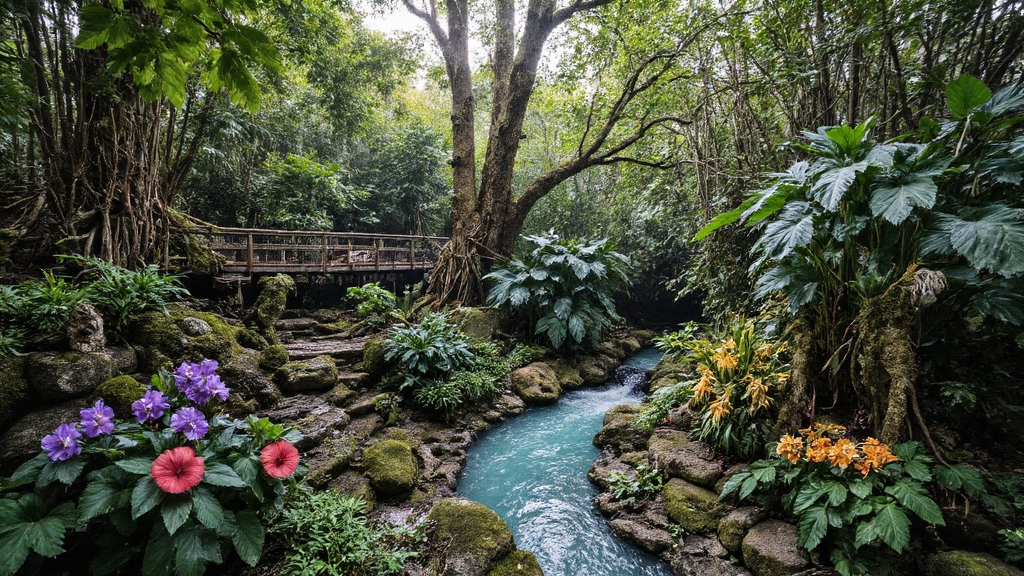
Thousands of tropical paradise gardens across the globe transform visitors into explorers of Earth’s most biodiverse ecosystems, where vibrant orchids cascade from towering trees and exotic palms create natural cathedral spaces.
Caribbean Botanical Treasures
You’ll discover exceptional experiences at Jardin Botanique de Deshaies, where lush tropical flora combines with parrots and flamingos. This Caribbean garden showcases the perfect blend of dense vegetation, colorful flowers, and exotic wildlife that defines tropical paradise environments. For those interested in gardening, consider the perfect footwear for tropical climates, which prioritizes comfort and safety for exploring these stunning landscapes.
European Greenhouse Innovations
Visit Netherlands’ remarkable tropical sanctuaries, including Tropical Jungle Garden at Kwekerij van Dijke and Oriental Bamboo Garden at Evenaar. These greenhouse environments successfully replicate warm, humid climates using advanced technology.
Design Trends
You’ll notice gardens emphasizing sustainable, drought-resistant plants like Agave and colorful Cordyline varieties. Water features maintain humidity levels, while multi-layered plantings create immersive jungle atmospheres that transport you to distant tropical regions. The most captivating displays feature Bird of Paradise with their banana-like leaves and striking orange and blue flowers that demand attention as exotic focal points.
Arctic and Alpine Gardens: Rare Cold Climate Plant Collections
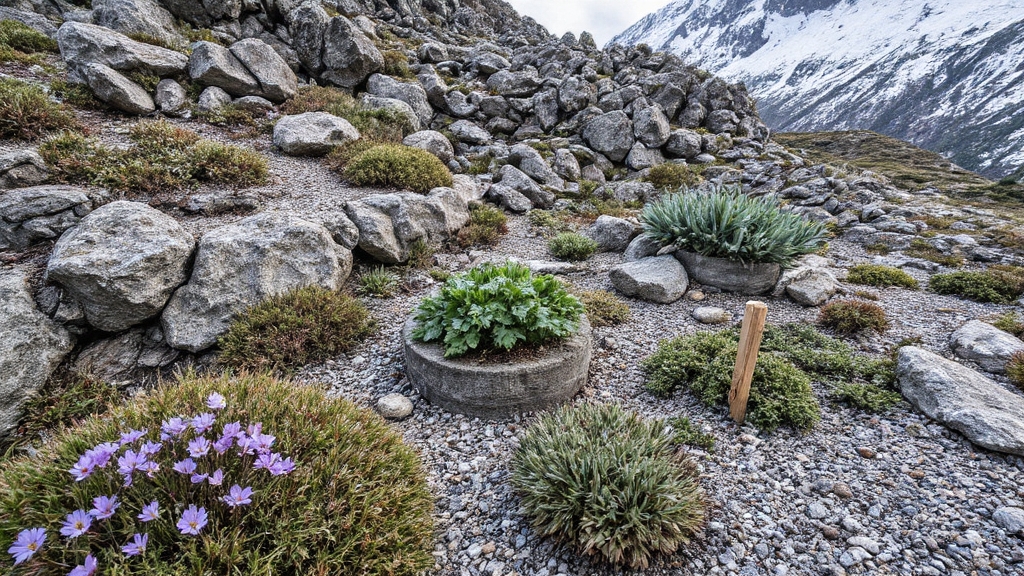
Arctic and alpine gardens challenge traditional gardening concepts by proving that Earth’s most extreme environments produce stunning botanical displays. You’ll discover thousands of rare species that’ve adapted to harsh conditions through fascinating traits like dwarfism, hairy leaves, and incredible frost resistance. The Arctic-Alpine Botanic Garden in Tromsø, Norway, stands as the world’s northernmost botanical garden, showcasing plants from polar regions and high mountains globally. For gardeners interested in replicating these environments, selecting seeds from highly rated sellers like High Mowing Organic Seeds and Baker Creek Heirloom Seeds ensures access to quality varieties suited for cold climates.
During your visit from May through September, you’ll witness nature’s compressed seasons unfold rapidly. The midnight sun creates unique viewing opportunities, while free admission makes this extraordinary collection accessible to everyone. The garden’s location is enhanced by the Gulf Stream’s moderating influence, which creates surprisingly mild conditions for such a northern latitude.
- Plan visits during late May-June for spectacular spring blooms
- Explore themed sections representing different cold climate regions worldwide
- Take advantage of 24-hour access for midnight photography opportunities
Geographic Distribution of the World’s Premier Botanical Destinations
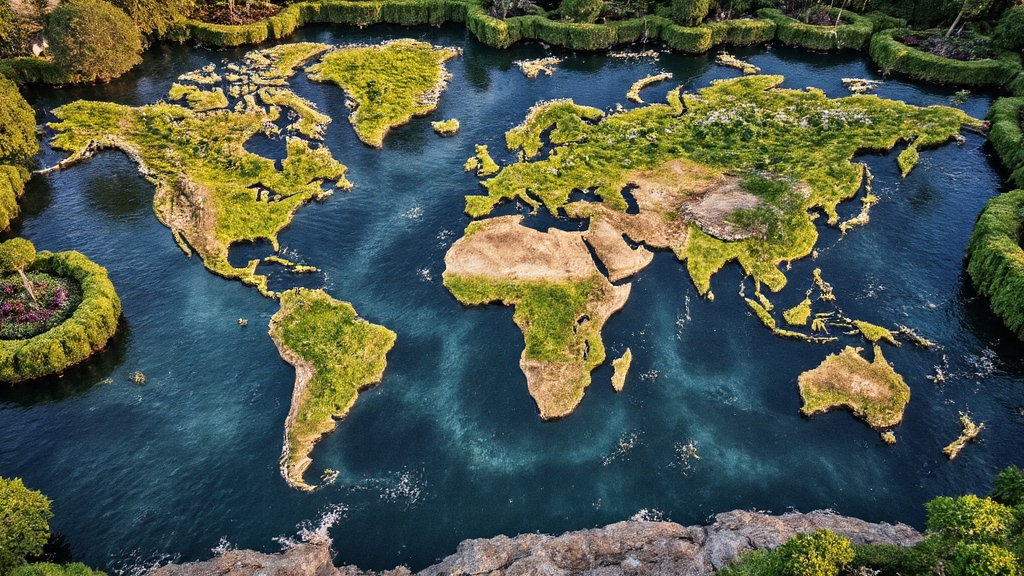
North America leads with massive gardens like Chicago Botanic Garden’s 385 acres and Missouri’s historic 1859 establishment. You’ll find diverse climates supporting everything from temperate displays to Honduras’s tropical Lancetilla Garden. The continent’s gardening aficionados are equipped with modern tools like the Kent and Stowe Capability Trowel, praised for its sharpened edges, that ensure efficient maintenance of such sprawling landscapes.
Europe dominates with UNESCO sites like Kew Gardens, housing 50,000 plant specimens, and specialized destinations such as Netherlands’ spring tulip shows at Keukenhof.
Asia showcases year-round tropical excellence in Singapore’s heritage gardens and Japan’s cherry blossom collections at Kyoto Botanical Garden.
South America and Caribbean regions offer unique subtropical experiences, with Bermuda’s 36-acre gardens blending Japanese, English, and sensory garden styles for expansive botanical exploration. Africa features the continent’s oldest surviving botanic garden in Durban, established in 1849 as an agricultural research station.
Historic and Architectural Garden Design Masterpieces
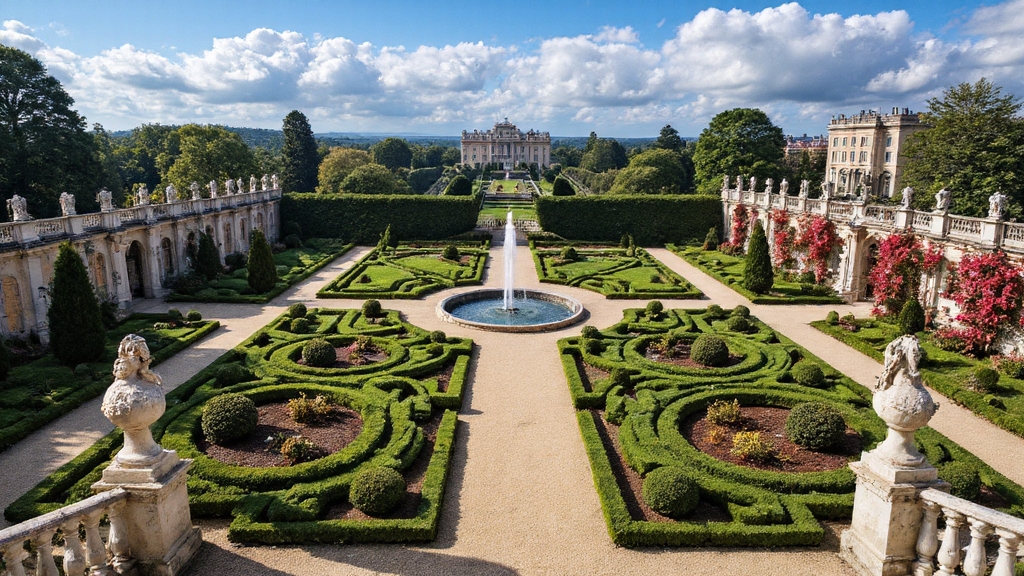
Beyond their geographic appeal, the world’s most celebrated gardens captivate visitors through their masterful blend of historic significance and architectural brilliance. You’ll discover centuries of design evolution at Versailles, where André Le Nôtre’s geometric precision required forty years to complete.
Beyond their geographic appeal, celebrated gardens captivate through their masterful blend of historic significance and architectural brilliance spanning centuries.
Italy’s Orto Botanico di Padova offers you the world’s oldest academic botanical garden, established in 1545 for medicinal research. England’s Blenheim Palace showcases dramatic style transformation from formal Baroque to natural English landscape design, much like how the famous Rodale’s Basic Organic Gardening emphasizes evolving best practices for sustainable garden management.
Sri Lanka’s ancient Sigiriya demonstrates sophisticated fifth-century hydraulic engineering, while Arizona’s Desert Botanical Garden proves modern architecture can harmonize with desert ecology. Contemporary rooftop gardens like FormaHQ in the UK showcase how architectural landscapes can transform urban spaces into elevated natural sanctuaries.
- Visit during early morning hours to appreciate architectural details in ideal lighting conditions
- Bring comfortable walking shoes for exploring extensive pathways and varied terrain features
- Consider guided tours to understand historical context and design principles behind each masterpiece
Urban Botanical Havens in Major Cities Worldwide
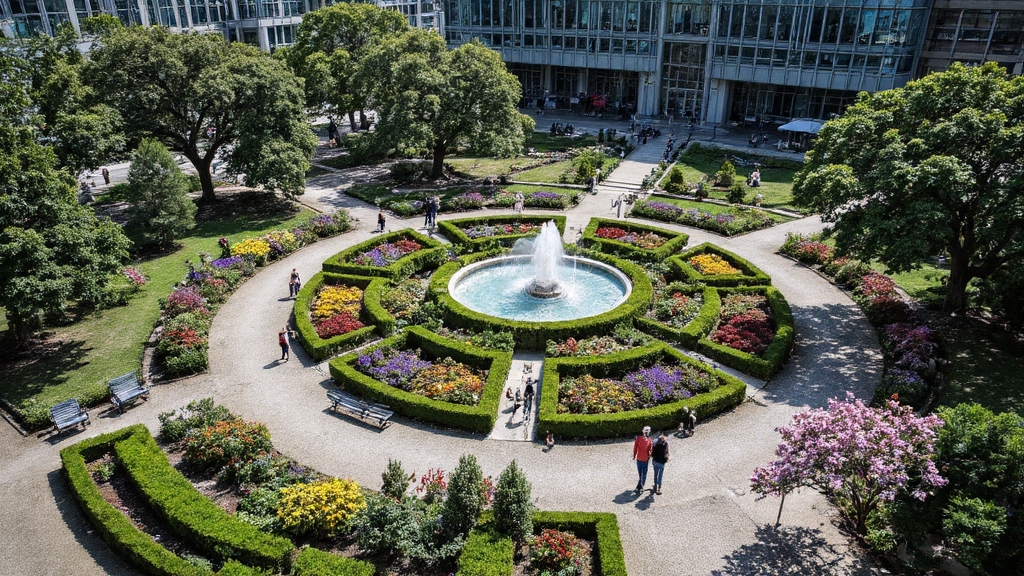
When you’re seeking natural beauty without leaving the urban environment, major cities worldwide offer extraordinary botanical gardens that serve as green oases amid concrete landscapes.
You’ll discover these urban havens combine accessibility with remarkable biodiversity. Each garden offers unique experiences, from Singapore’s tropical orchids to Montreal’s diverse themed collections, making them perfect destinations for nature lovers residing in metropolitan areas. These botanical gardens function as living museums, showcasing rare plants, local favorites, and endangered species while providing conservation efforts and education to preserve plant life for future generations. Additionally, many gardens incorporate indoor plants like Philodendron and Peace Lily to further enhance their exhibits and educate visitors on the benefits of these captivating species.
Seasonal Spectacles and Special Garden Events Worth Planning For
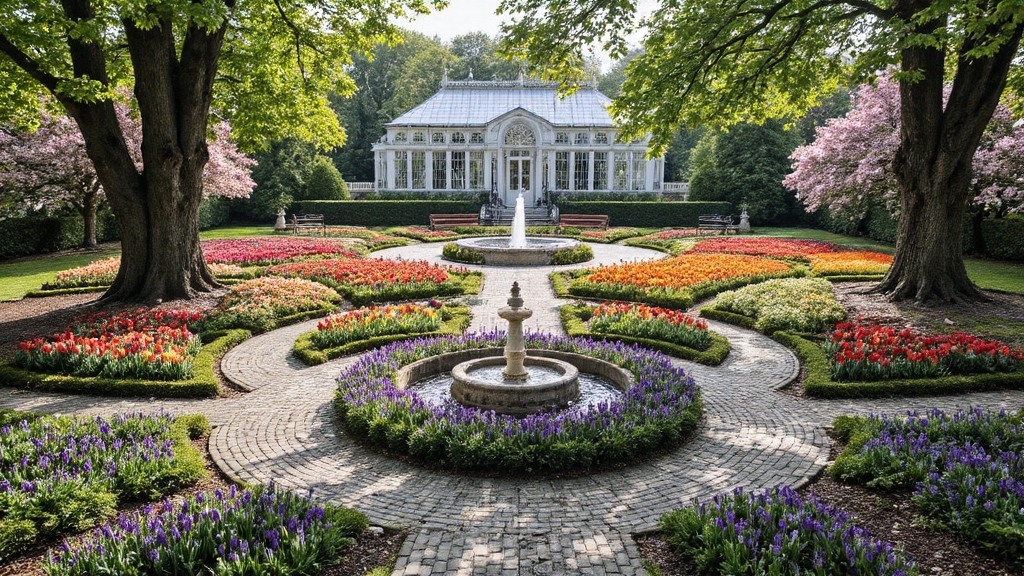
Gardens transform throughout the year, offering spectacular seasonal displays and special events that create unforgettable experiences for visitors who plan their trips around nature’s calendar. In addition to seasonal displays, travelers can discover inspiration from leading publications such as Fine Gardening, which offers expert advice for gardeners of all skill levels.
You’ll discover winter wonderlands featuring model trains weaving through festive landscapes, like the United States Botanic Garden’s “Season’s Greenings” exhibit running from November through January.
Spring brings specialized orchid exhibitions showcasing thousands of blooms and their fascinating pollination strategies.
Summer festivals combine horticulture with culinary artistry, while special plant sales offer rare acquisitions for collectors. These celebrations often honor summer exhibitions ranging from artistic collaborations to botanical showcases that capture the season’s peak growing period.
- Plan visits during peak blooming seasons to witness the most spectacular floral displays and themed garden exhibitions
- Book special events early, such as orchid dinners or holiday train shows, as these popular seasonal attractions fill quickly
- Check garden calendars in advance to coordinate your travel with seasonal festivals, plant auctions, and family-friendly educational programs
Conservation Hubs and Research Centers Leading Plant Science
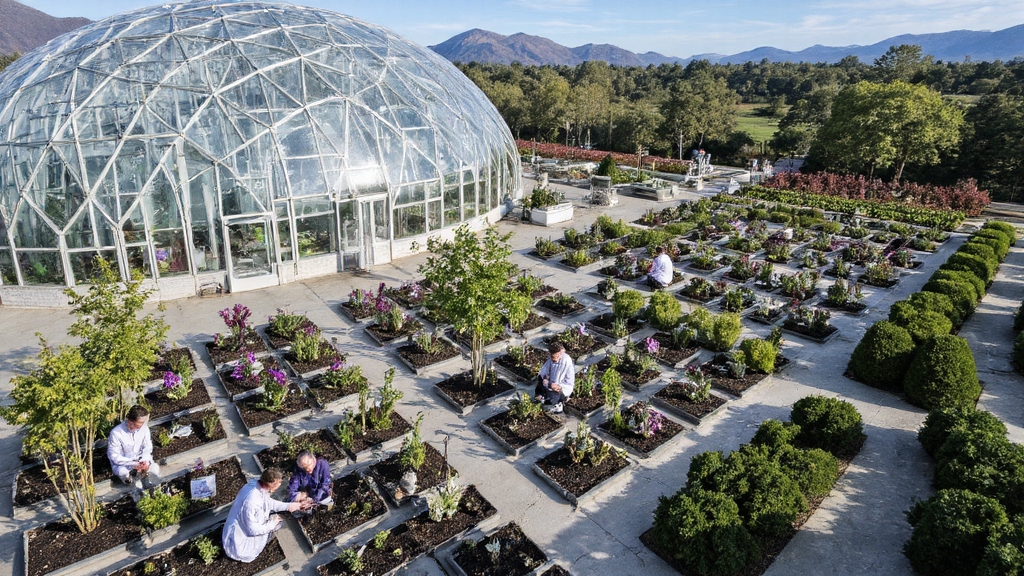
Leading botanical institutions worldwide operate as critical conservation hubs, combining world-class research facilities with extensive living collections to tackle urgent environmental challenges.
Botanical gardens serve as vital conservation centers, merging cutting-edge research with diverse plant collections to address pressing environmental crises.
You’ll discover groundbreaking science at places like New York Botanical Garden, which spans 250 acres and operates the Center for Conservation and Biodiversity. Here, researchers preserve endangered species through seed banks, tissue collection, and genetic libraries.
Visit the Botanical Research Institute of Texas to explore over 1.5 million herbarium specimens that support plant taxonomy research. Brands like Kent and Stowe are known for versatile tools, essential for maintaining such diverse collections.
The University of California Botanical Garden offers living collections that serve as resources for conservation genetics and climate resilience studies. Many of these research centers collaborate with professional botanical societies like the Botanical Society of America and the American Phytopathological Society to advance plant science knowledge.
These institutions collaborate globally, participating in conferences like COP16 to shape biodiversity policies and share conservation strategies.
Practical Travel Tips for Accessing Remote and Metropolitan Gardens
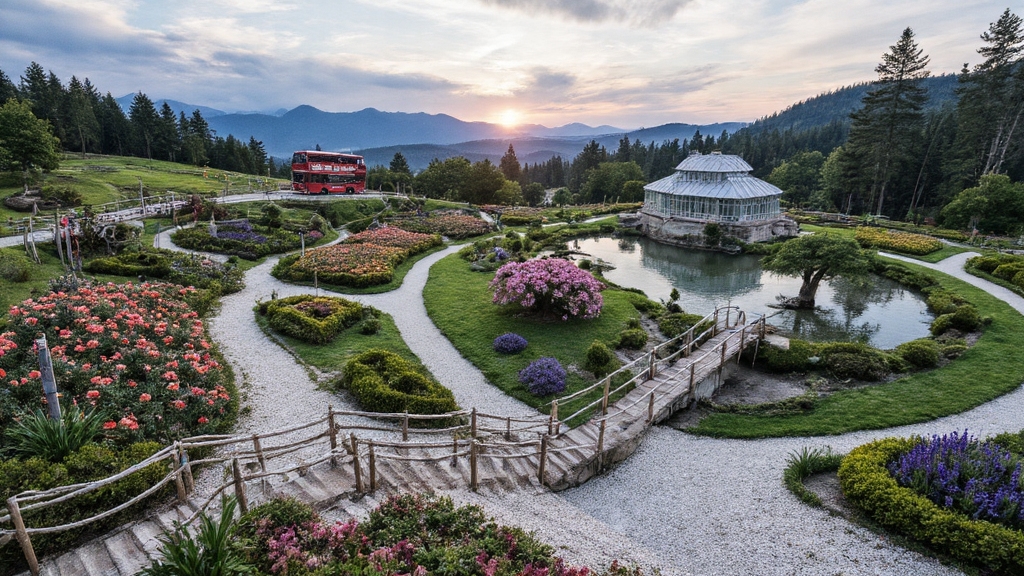
How can you transform your garden-visiting dreams into reality, whether you’re planning to explore a remote botanical paradise or navigate a bustling metropolitan conservatory? Start by researching transportation options early. Metropolitan gardens offer convenient public transit access, while remote locations often require rental cars or multimodal transport including flights and local buses. Purchase tickets online in advance, especially during peak seasons or special events. Many gardens provide discounted rates for students, seniors, and groups.
Check seasonal weather conditions and road accessibility for remote destinations. Book accommodations ranging from luxury hotels near city gardens to eco-lodges near wilderness sites. Consider guided tours and audio guides to enhance your experience. Some gardens offer specialized scientific research programs where visitors can participate in plant conservation studies and learn directly from botanists. Including tools like the DeWit Forged Hand Fork may aid those who wish to engage in hands-on gardening activities during their visits.
- Verify opening hours and seasonal blackout dates before traveling
- Pack appropriate clothing, water, and insect repellent for comfort
- Research on-site amenities like cafes, restrooms, and visitor centers
Frequently Asked Questions
What Are the Typical Entrance Fees for World-Renowned Botanical Gardens?
You’ll typically pay $10-$25 for adult admission at world-renowned botanical gardens. Children’s tickets cost about half the adult price, with free entry for toddlers under three or four.
You can save money through student, military, and senior discounts, which reduce costs by 10-40%. Family packages offer moderate savings, while membership programs usually pay for themselves after two or three visits.
Which Gardens Offer the Best Photography Opportunities and Permits?
You’ll find exceptional photography opportunities at Longwood Gardens in Pennsylvania, which offers diverse landscapes and seasonal displays.
Portland Japanese Garden provides unique traditional aesthetics, while Butchart Gardens delivers vibrant floral variety.
Check each garden’s permit policies directly, as tripod restrictions and professional fees vary widely. Consider memberships for unlimited access, early entry privileges, and waived photography fees at participating gardens.
Are Guided Tours Available at Top Botanical Gardens Worldwide?
You’ll find guided tours available at most top botanical gardens worldwide. Leading institutions like Kew Gardens, New York Botanical Garden, and Gardens by the Bay offer expert-led walks in multiple languages.
You can choose from themed tours, private group experiences, or audio-guided options. These tours cover plant science, conservation efforts, and garden history, enhancing your understanding while exploring collections.
What Dining and Shopping Options Exist Within Premier Botanical Gardens?
You’ll discover excellent dining and shopping at premier botanical gardens worldwide. Most feature on-site cafés serving fresh, artisanal meals, soups, salads, and seasonal dishes with outdoor seating options.
You can browse garden stores selling plants, tools, books, and unique botanical gifts. Many gardens integrate these experiences seamlessly, placing retail shops adjacent to restaurants.
You’ll also find special events combining food markets with craft fairs for enhanced experiences.
Which Gardens Are Wheelchair Accessible and Family-Friendly for Young Children?
You’ll find Chicago Botanic Garden offers excellent wheelchair accessibility with free rentals, accessible trams, and a Nature Play Garden for children.
Myriad Botanical Gardens provides ADA-compliant paths and open spaces perfect for family exploration.
Fairchild Tropical Botanic Garden features wide, smooth pathways throughout. These gardens include accessible restrooms, shaded seating areas, and interactive exhibits that engage young visitors while accommodating mobility needs seamlessly.
Conclusion
You’ve discovered amazing garden destinations across every climate and continent, from desert cacti collections to tropical plant sanctuaries. You’ll find world-class botanical experiences in both remote locations and major cities. Plan your visits around seasonal highlights, special events, and conservation programs that interest you most. Whether you’re seeking research centers or peaceful retreats, these gardens offer unforgettable experiences. Start planning your botanical adventures today, and you’ll create lasting memories while supporting plant conservation efforts worldwide.

